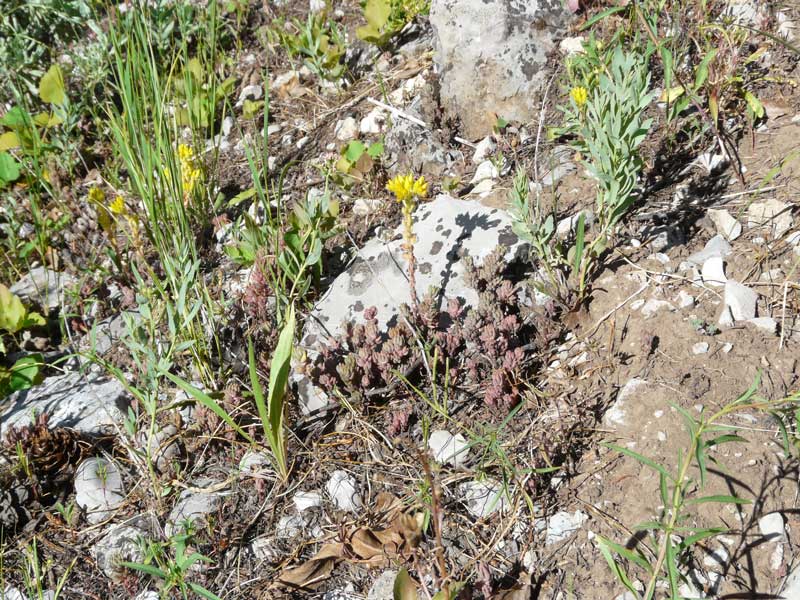Sedum lanceolatum / lanceleaf stonecrop
- bright yellow, star-shaped flowers (possible red tinge)
- fleshy/succulent, small leaves (green, yellow or red)
- open rocky outcrops, gravelly sites
- drought tolerant
The sedums, stonecrops, are a group of succulent plants, i.e. they have thick, rounded leaves well adapted for water storage. Interestingly, this feature also allows them to accumulate acids in the leaves and they actually fix CO2 at night (a process known as Crassulacean acid metabolism, or CAM). Sedum is the largest genus in the family Crassulaceae. The lanceleaf stonecrop (and sedums in general) grows on rocky soils, generally at higher elevations. It tends to grow on exposed rocks, and in their crevices, hence the name “stonecrop”.
Stones don’t retain water very well, and succulents are usually exposed to water shortages. To cope with drought, one strategy is for the plants to hold their leave close in to the stem and to drop them as drought increases. On the other hand, when leaves break off for one reason or another, they can root and grow. In addition to this vegetative reproduction, the flowers are insect pollinated and produce tiny, light-weight seeds that can easily be blown to new cracks, crevices and soil bits.
Sedum lanceolatum produces some nasty chemicals, especially a cyanogenic glycoside, that prevents herbivory by almost everything… everything that is, except the Parnassius smintheus butterfly larvae (caterpillars).
The caterpillars sequester the chemicals in their bodies to prevent predation. And while the caterpillars themselves do not induce the plant’s chemical defenses, when mechanically wounded, the chemical contents of the leaves increase to the point that either caterpillar growth is inhibited, or they run as fast as their legs and prolegs can carry them to another, healthier plant.
Keeping the drama going, in the winter, the chemical levels become fatally toxic to the larvae, and do not drop until April or later. If the snow melts earlier and the butterfly eggs hatch, they larvae are unlikely to survive the high toxin levels still in the leaves. Wikipedia provides some interesting scientific references for this story.
| Family | |
|---|---|
| Color | |
| Blossom size | |
| Inflorescence size | |
| When? | |
| Where? |





